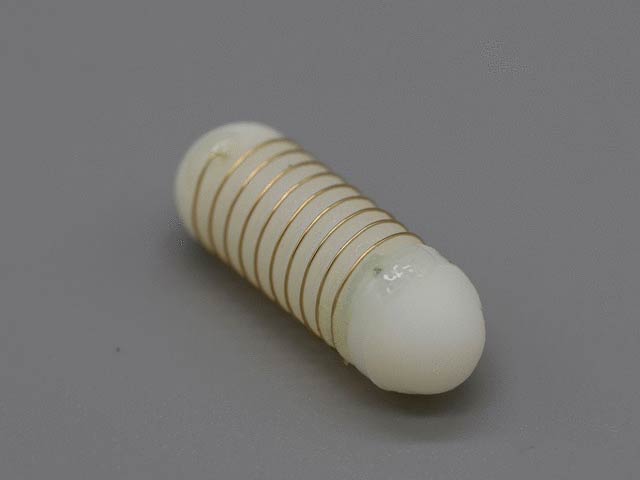MIT and other experts have developed an appetite suppressant capsule modeled after an Australian lizard. Photo: Courtesy of New Atlas
Boston: Scientists have created a capsule inspired by the skin of a lizard that can stimulate the appetite of patients.
It has been dubbed an edible ‘electrotherapeutic capsule’ which activates the endocrine cells (cells) in the stomach to release the appetite-stimulating hormone ‘ghrelin’. The hormone triggers our nervous system to feel hungry.
In some patients, this feature of endocrine cells is lost and capsules are made to help with this. It has been developed by the Massachusetts Institute of Technology (MIT), New York University, and other institutions. For this, the spiny lizard of Australia was observed. Special features are formed on its skin. Due to the structure of the skin, it attracts water particles towards it.
This capsule has been named as Flash meaning ‘Fluid Wicking Capsule for Fardi Active Stimulation and Hormone Modulation’. In which, apart from the electronics, the outer surface has been made like a screw. The upper end of the capsule attracts water while the lower end repels and repels water. Thus it touches the surface of the intestine.
In the next step it activates the endocrine cells by emitting a mild electrical current. In this way, the hormone starts to be released from the cells.
It was tested on pigs and in just 20 minutes it started working and the ghrelin hormone started to be released. After doing its job, the capsule is automatically excreted from the body.
Experts are hopeful that human trials of the capsules can begin in just three years.
(function(d, s, id){
var js, fjs = d.getElementsByTagName(s)[0];
if (d.getElementById(id)) {return;}
js = d.createElement(s); js.id = id;
js.src = “//connect.facebook.net/en_US/sdk.js#xfbml=1&version=v2.3&appId=770767426360150”;
fjs.parentNode.insertBefore(js, fjs);
}(document, ‘script’, ‘facebook-jssdk’));
(function(d, s, id) {
var js, fjs = d.getElementsByTagName(s)[0];
if (d.getElementById(id)) return;
js = d.createElement(s); js.id = id;
js.src = “//connect.facebook.net/en_GB/sdk.js#xfbml=1&version=v2.7”;
fjs.parentNode.insertBefore(js, fjs);
}(document, ‘script’, ‘facebook-jssdk’));


